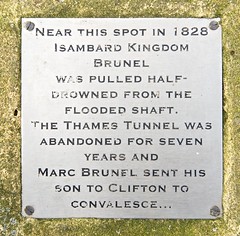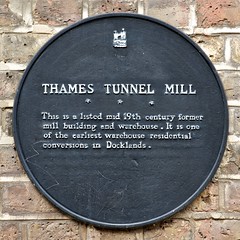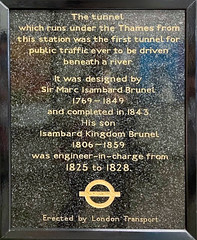Thames Tunnel


Thames Tunnel
(1825-present)
place, tunnel, and first shield-driven subaqueous tunnel
Commemorated on 4 plaques
Thames Tunnel constructed 1825-1843 first shield-driven subaqueous tunnel. Sir Marc Isambard Brunel civil engineer.
Rotherhithe tube station, London, United Kingdom where it sited (1824)
Near this spot in 1828 Isambard Kingdom Brunel was pulled half-drowned from the flooded shaft. The Thames Tunnel was abandoned for seven years and Marc Brunel sent his son to Clifton to convalesce...
Rotherhithe Street, London, United Kingdom where it sited
Thames Tunnel Mill - This is the a listed mid 19th century former mill building and warehouse. It is one of the earliest warehouse residential conversions in Docklands.
Rotherhithe Street, London, United Kingdom where it sited
The tunnel which runs under the Thames from this station was the first tunnel for public traffic ever to be driven beneath a river It was designed by Sir Marc Isambard Brunel 1769-1849 and completed in 1843 His son Isambard Kingdom Brunel 1806-1859 was engineer-in-charge from 1825 to 1828.
Rotherhithe Station , London, United Kingdom where it sited




